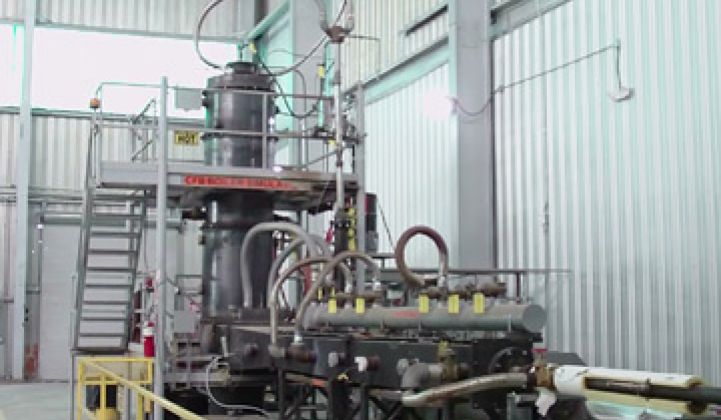Nature isn’t as bountiful as once anticipated, Calera has learned.
The sometimes controversial startup originally focused on the idea of mixing carbon dioxide with seawater containing traces of calcium and other minerals to produce calcium carbonate, one of the key ingredients in cement.
The process -- ideally -- would sequester greenhouse gases from power plants and industrial sites fairly inexpensively and curb the need to mine carbonates, an energy intensive process, for the construction industry. A key element to the concept involves exploiting exotic polymorphs, or forms, of calcium in sea water to minimize the amount of energy and additional raw materials required to turn flue gases into a solid.
It turns out, however, that the brines infused with the appropriate feedstocks aren’t as common as once believed, says new CEO Will Roach, and they often aren’t located right next door to power plants.
“The ideal [feedstock] would be naturally occurring, abundant and free. Well, it’s not. That is the fundamental conclusion I came to,” Roach said. “It is difficult to get a carbonate product using naturally occurring brines.”
As a result, Calera has expanded its search for intermediate minerals. It will continue to look for natural sources, but it is also experimenting with industrial waste products like kiln dust, cement dust or fly ash from smokestacks.
A third option: transforming naturally occurring elements or waste products into workable feedstocks via electrochemistry, a process akin to genetic modification in microbes.
“The whole viability of the process is having available alkalinity, whether it is waste alkalinity or naturally available alkalinity or whether it is manufactured. We are looking at all three of those,” Roach said. “Naturally occurring brines are probably not as easy to find as once believed. A lot of industrial processes make waste alkalinity. Fly ash is alkaline.”
The Calera process works. See the video. In Moss Landing, California, the company has erected a small prototype plant that can convert the carbon dioxide from around 100 kilowatts of electrical capacity into carbonates and a larger one that can accommodate 10 megawatts worth of gas. Carbon dioxide gets pumped into a shower of water infused with feedstocks and a solution forms. If it works, 40-megawatt power plants would go up in China and the U.S.
“All our processes are close to ambient temperature and ambient pressure,” said Will Day, one of the engineers behind the prototype plant. “To construct and finance [one] would be easy.”
The big question is whether the process, particularly the production of feedstocks, can be accomplished economically. Skeptics abound. Making catalysts is a risky process and, without carbon taxes, carbon storage has little appeal.
Calera’s prototype facility is filled with bags of coal dust and fly ash from different regions. Chemists are trying to figure out low-energy pathways toward feedstocks. The company also has a prototype power plant that can run on natural gas and different types of coal so that it can test its additives against different flue gases.
“We have to work consistently on finding cheaper forms of alkalinity, or as my colleagues like to say, protenation, the ability to form carbonates,” he said. “Right now the costs are not there to make that economic."
“Can we get the parasitic energy very low,” he added later. “Everyone in the CO2 capture industry would say the costs are nowhere where we need them to be.”
Despite the challenges, mineralization of carbon dioxide as proposed by Calera and companies like Skyonic has huge appeal. Conventional carbon capture -- stuffing it into underground aquifers and caves -- will likely face stiff resistance from community groups and environmentalists. The captured gases also only sometimes can provide a secondary economic use.
Others are experimenting with converting it into liquid fuels, an even more challenging chemical reaction.
Carbon capture, of course, depends entirely on carbon taxation or cap and trade, which seems paralyzed in the U.S. at the moment. But Roach, among others, believes that the current state of affairs is temporary. Europe will likely increase its renewable energy goals while China’s vice premier recently voiced support for carbon fees. Rising energy prices in the U.S. will also heighten awareness around conservation and renewables.
“Energy is the central fabric of our society,” he said.



